Thanks, JP...alright, got the honey-doos taken care of. Now we are ready for calibration. I am going to to go into a bit of theory, so you guys know what we are trying to do with the calibration, and why. Then I'll get into the details of "how" to do it.
If you read the article that Doug recommended above, you get a feel for how the tach works. A magnet spins through a flexible drive. The aluminum disc is influenced by the magnetic field, which imparts a force. This force winds the clock spring directly proportional to the speed of the spinning magnet, to which the tach needle is connected. Very simple.
There are only 2 things that affect the force imparted to the disc...those are the strength of the magnet, and the speed it is spinning.
We want to know the speed, so we have to work on the strength of the magnet to calibrate the instrument. It is absolutely wonderful how easy the strength of the magnet can be changed. All you need to strengthen the magnet in the tach is another, stronger magnet. That's why I bought the big rare earth honker for $30. I now know I could have easily gotten by with a magnet just about 1/3 the strength of the one I bought.
To strengthen the magnet in the tach, all you have to do is align the fields of your strong magnet to the tach magnet, North to South...this is easy, as it is the only way they will want to touch each other. They will repel if you don't have them lined up right. Once you touch them, slide the stronger magnet across and off.

That's all it takes! I did it several times at first, but realized that if I even touched and slid once, that was enough to impart double the strength to the tach that you really need.
No adding magnets, bending, or any other fancy tricks...just touch and slide one time!
So, now you have a tach magnet that is too strong. When I spun the tach to 2,000 RPM, the tach registered 4,000 RPM. We have to "dumb it down" to just the right strength. I studied this issue for months. The old speedo shops used a de-gouser. This is a fancy name for an AC driven electromagnet. When you put AC into the coil, the magnetic field flip flops North to South every time the current reverses...so 60 times per second. Just as we used a strong magnetic field to build the tach magnet up...reversing the field rapidly actually knocks it down. We just have to find a de-gouser. Hmmm?? Sounds like a gun type soldering iron is just the ticket...and it is, almost!
The soldering iron works, just not very well. I had to hold it by the tach magnet for considerable time to see any noticeable change in the strength of the magnet. But, it does work. I got impatient, as I usually do, and found a better way. We need to reverse a strong magnetic field in close proximity to the tach magnet. It turned out to be very easy...just use your strong magnet again. All you have to do is move it about an inch from the the tach magnet...while the tach is spinning...and it accomplishes the same thing as a de-gouser. The trick is how long to hold it there. A second or two is all it takes!
Well...that's the theory, now for the practice.
The tach is driven off the distributor at a 1:1 ratio. The distributor is 1:1 with the cam, which is 1:2 with the crankshaft. If you notice, the tach actually says 2:1 right on it's face. I love it when things work out even! The tach has to indicate twice the speed we are actually spinning the input shaft. So, for 3,000rpm indicated, the tach is actually spinning at 1,500 rpm. We need to spin the tach at a known speed to calibrate it. Here is what I chose:

I "happened" to have a spare TR3 sitting around, so I just unplugged the speedo drive and used a spare speedo cable to feed the rebuilt tach. The rectangular instrument is the dwell meter I have left over from the 1970's. Yes. I am that old, and...like this old tool...I'm still hanging in there. Any electronic tach will work, just remember the TR3 is positive ground...so the plus goes to the block, and the negative feed to the coil. So now I have a motor to spin my tach, and another independent way of telling how fast it is spinning. In this pic I have the case installed on the tach...don't install the case for calibration, as you have to remove it to change the calibration. (I don't know what I was thinking) Here is the process:
1) Start the car and rev to a steady RPM, where you want the tach to be the most accurate. I used 3,000 RPM, since that is the middle of the scale. That is where I cruise the most. If you rev to the limit regularly, I'd recommend using 5,000 RPM to prevent a chance of overspeed. The point is that we are dealing with a mechanical instrument, so it will not be perfect at more than 2 points on the dial...idle, and whatever point you pick.
2) See what the tach registers. My first run the tach read 6,000 RPM with the actual engine turning 3,000.
3) to slow the tach reading, reduce the strength of the tach magnet by CAREFULLY!! moving the strong magnet 1 inch from the tach magnet, while the tach is still turning. Hold it about 2 seconds and remove the strong magnet. Recheck the tach reading for accuracy. Repeat if needed to weaken the magnet.
4) To speed the tach reading, we need to strengthen the tach magnet. STOP THE ENGINE! Or just unplug the flexible drive. From the back side of the housing, touch the strong magnet to the tach magnet and slide. You do not have to take anything apart to do this...here is how the housing looks from the back:
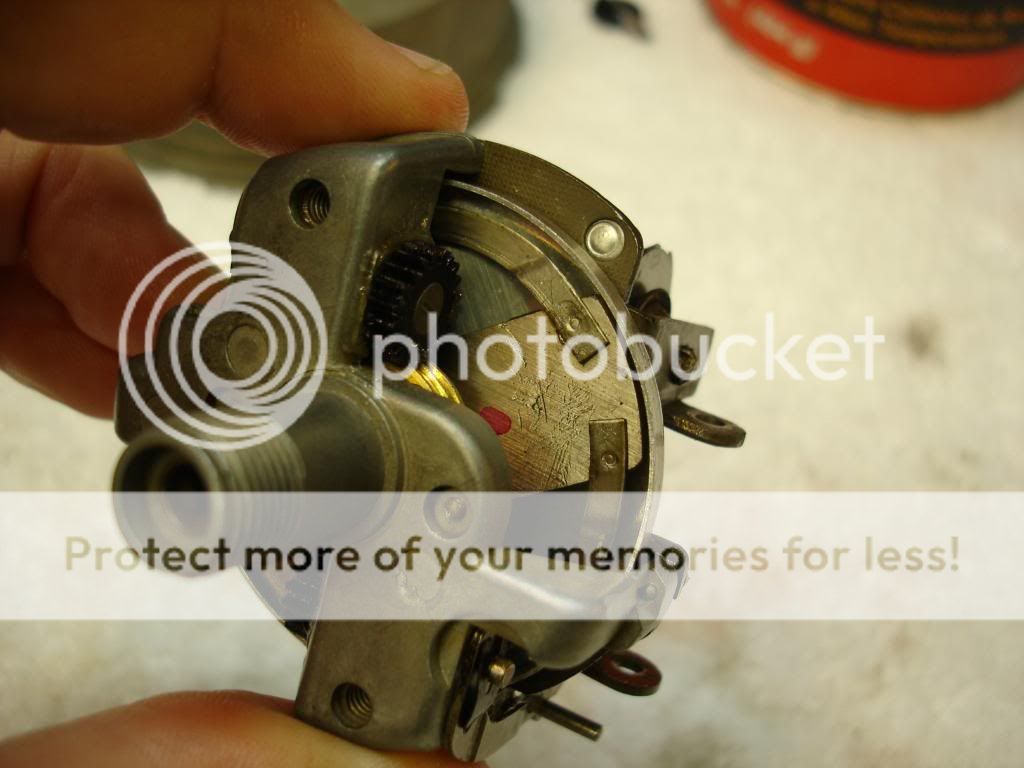
In this pick you can see half the tach magnet. That is where you touch it and slide the larger magnet. Just one side is enough to strengthen it.
5) After repeating step 3 and 4 several times, you will get a perfect calibration. For me, that was exactly 3,000 RPM indicated at 3,000 RPM actual. The final step is to check your idle indication. This setting is controlled by the preload on the clock spring. Remember how we set the needle to line with the small dot, and popped it over the peg on the tach face? That was setting the preload on the needle assembly. If the spring is still in good shape, when you let the engine idle, the indication will be a perfect alignment at the actual RPM. If not, hold the aluminum disc with a finger and carefully turn the needle on the shaft until it is.
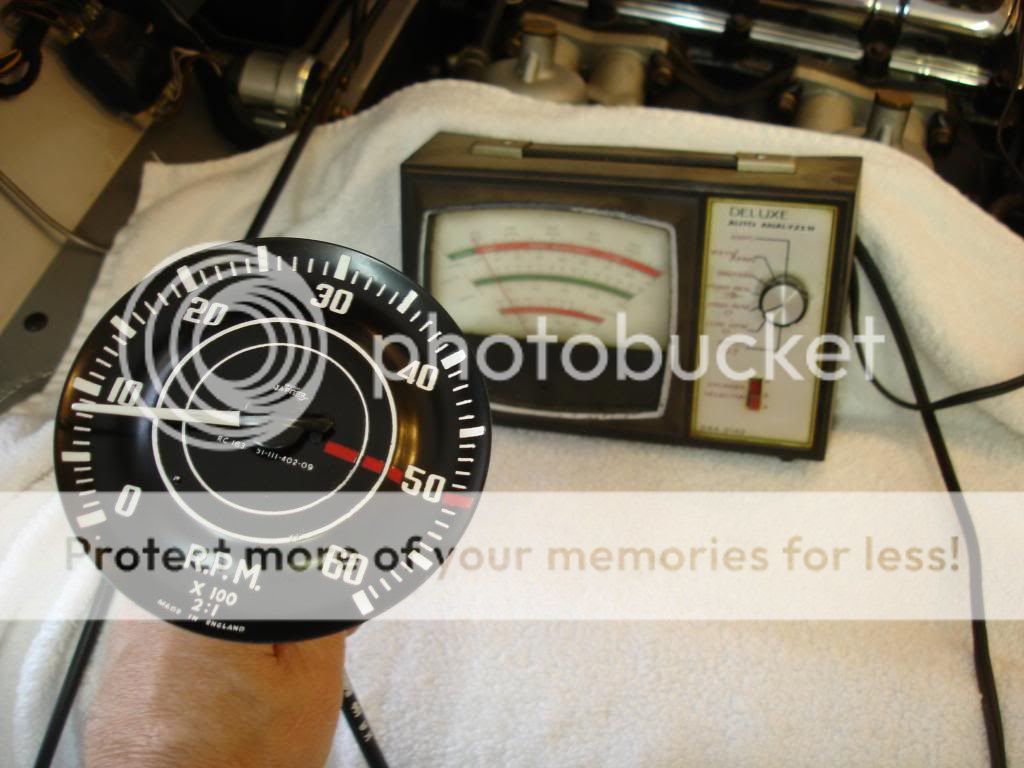
6) If you had to move the needle to get a perfect idle indication in step 5, then you now have to recalibrate your high indication. It will only take a very quick pass with your "degouser", since you are likely only off a couple hundred RPM at most. Repeat steps 3-5 as necessary to get a perfect idle and high indication.
7) Now, when you are happy...like I finally was after smashing and rebuilding the tach face...firmly press the needle fully onto the shaft.
You are calibrated! All you needed was some way to spin the tach at a known speed, and a big a%$ magnet! I thought the whole process was pretty cool, but I'm easily amazed!!

 Hey there Guest!
Hey there Guest!
 smilie in place of the real @
smilie in place of the real @
 Pretty Please - add it to our Events forum(s) and add to the calendar! >>
Pretty Please - add it to our Events forum(s) and add to the calendar! >> 
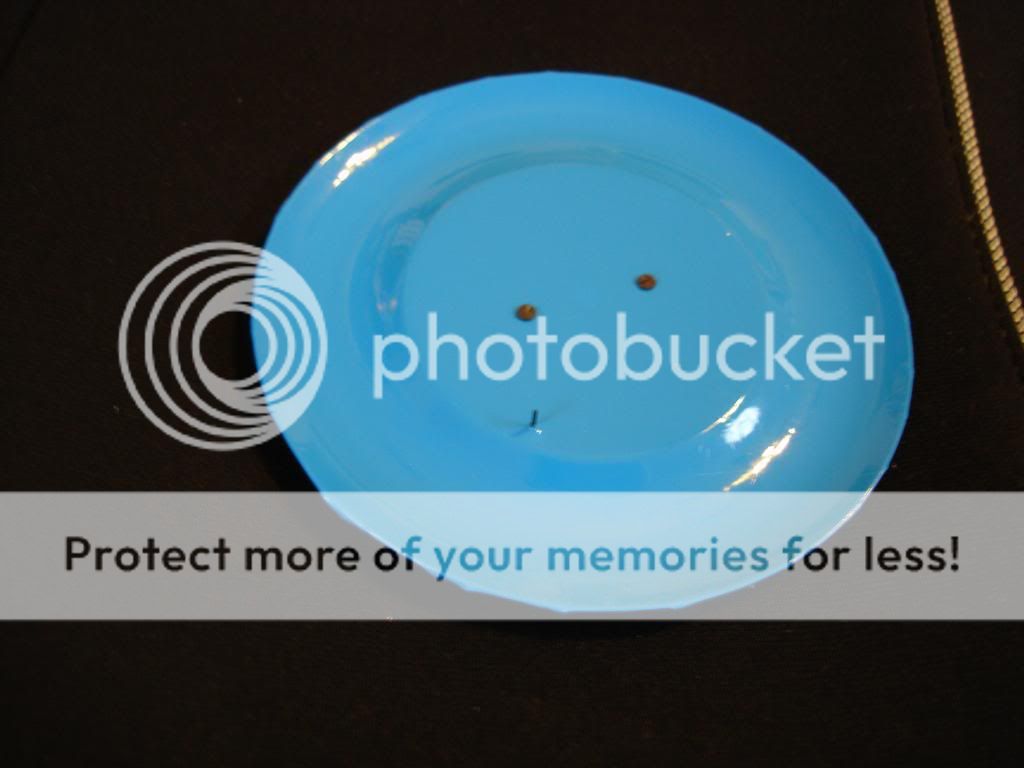

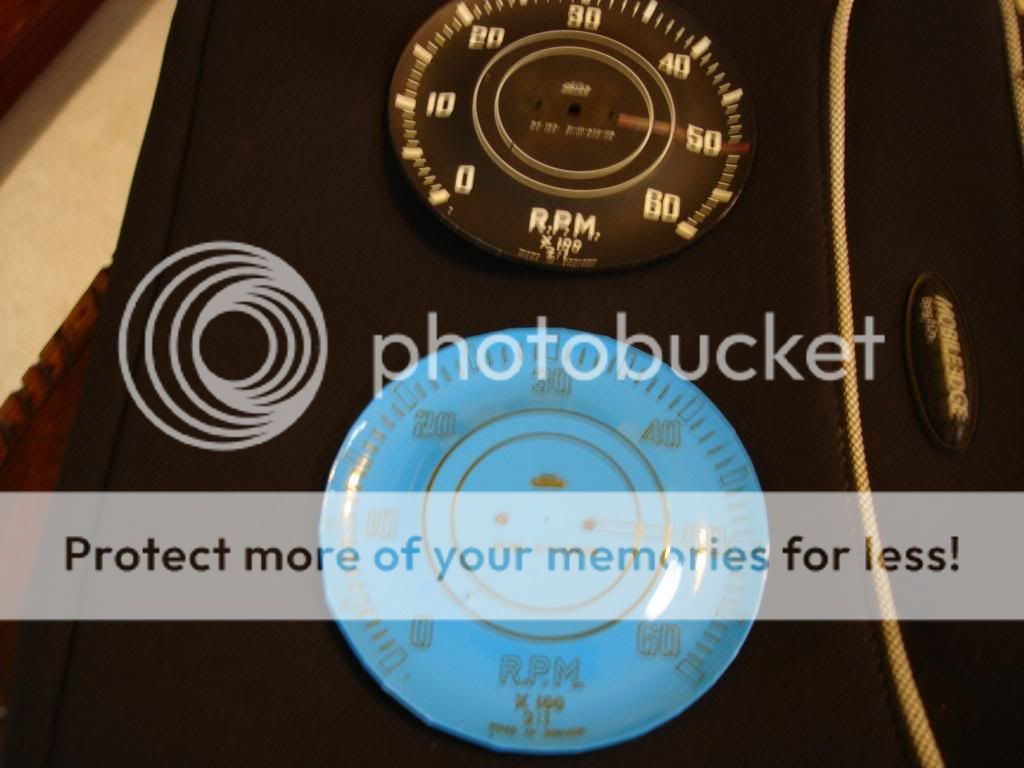
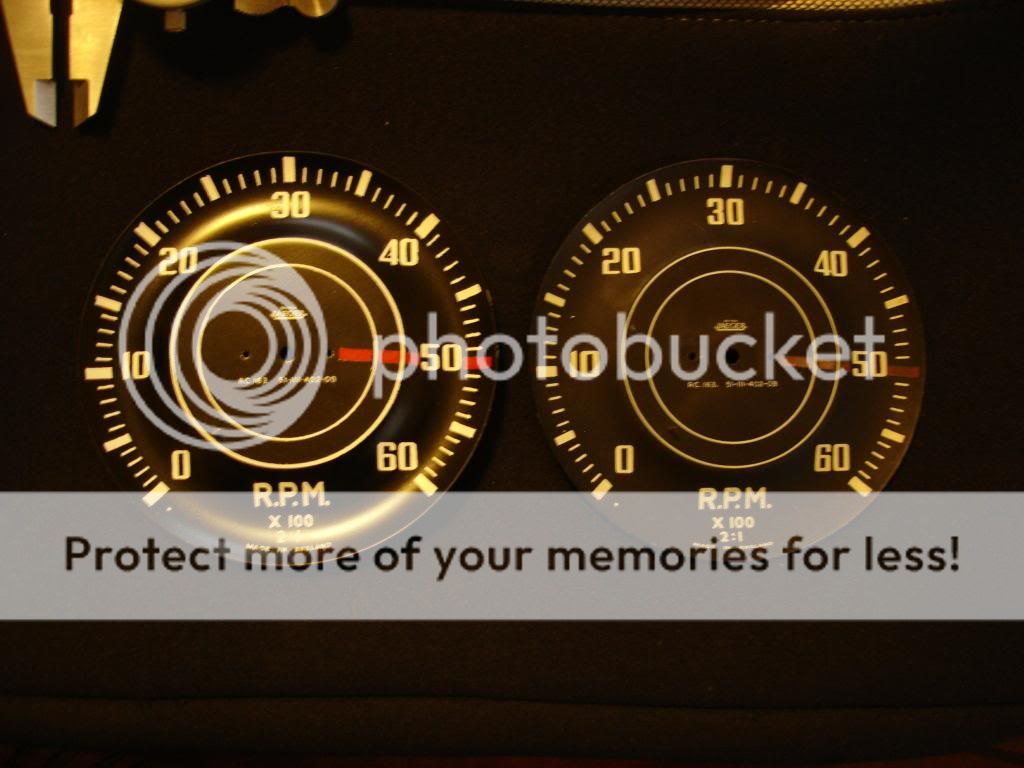
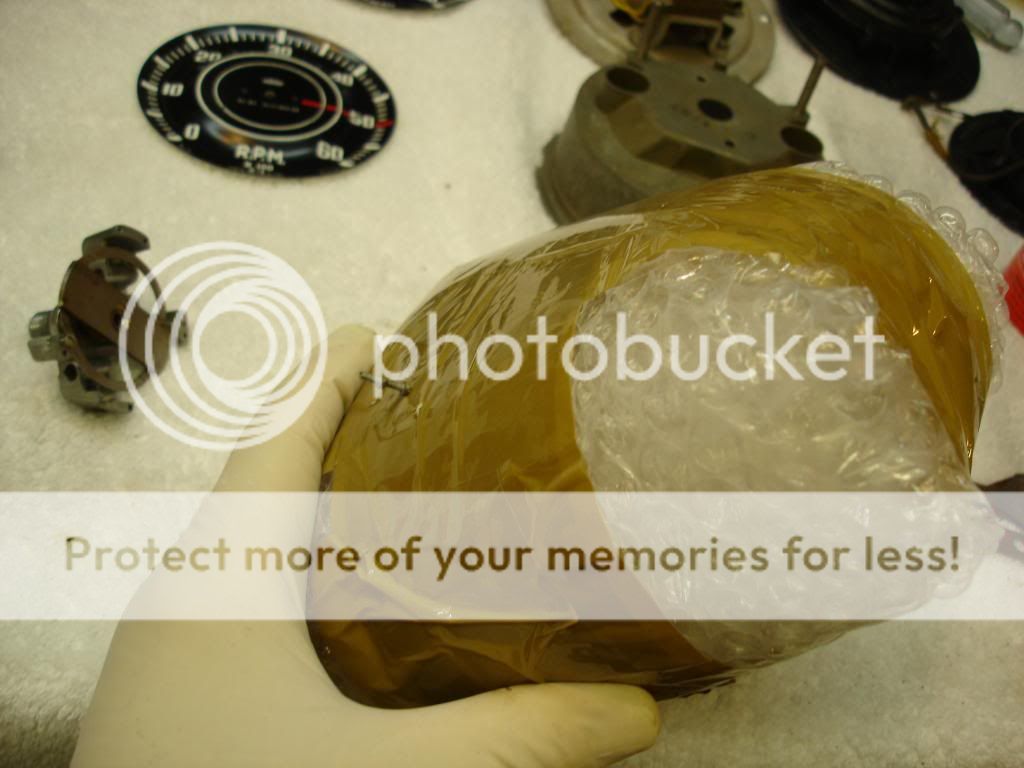


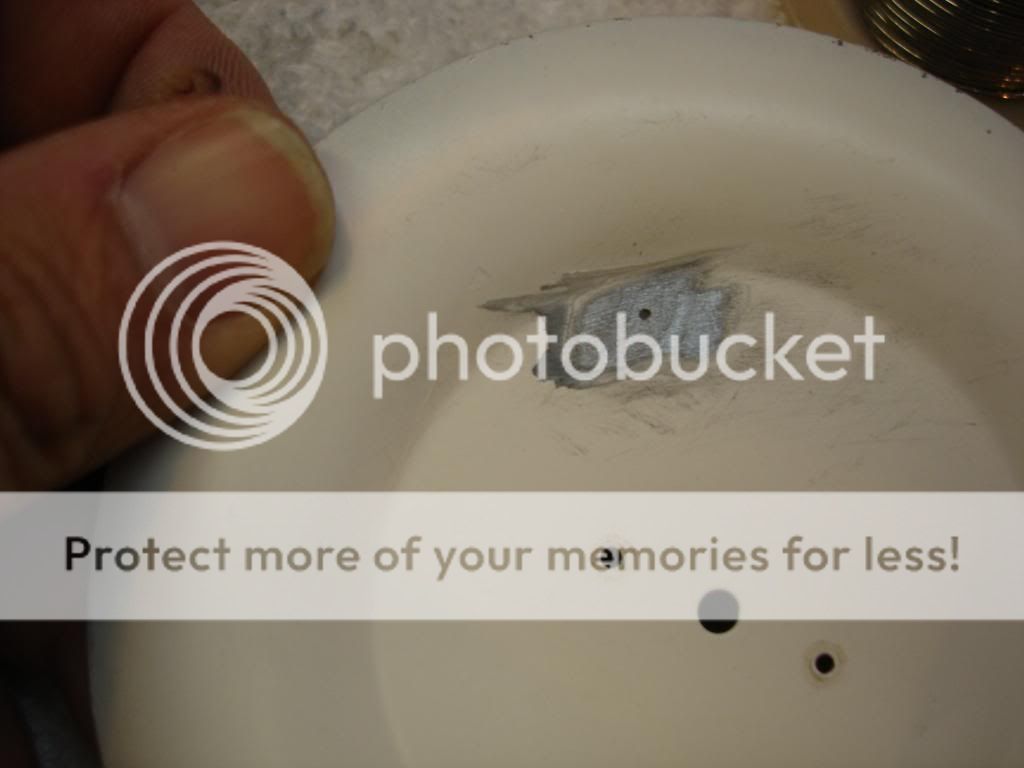
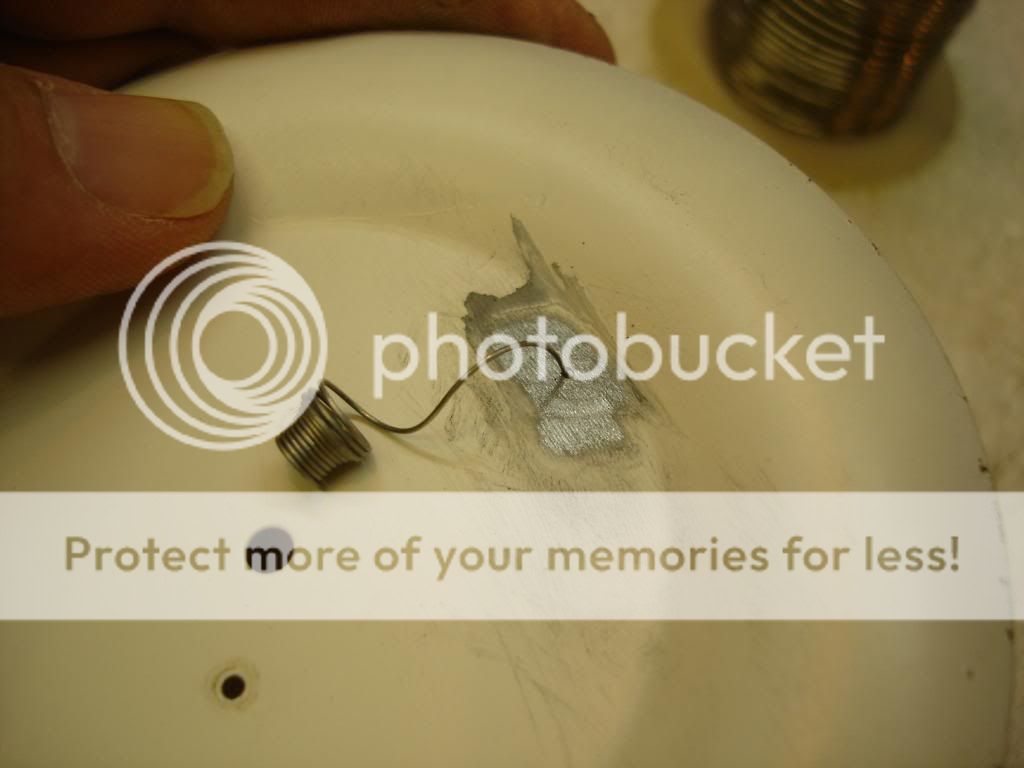
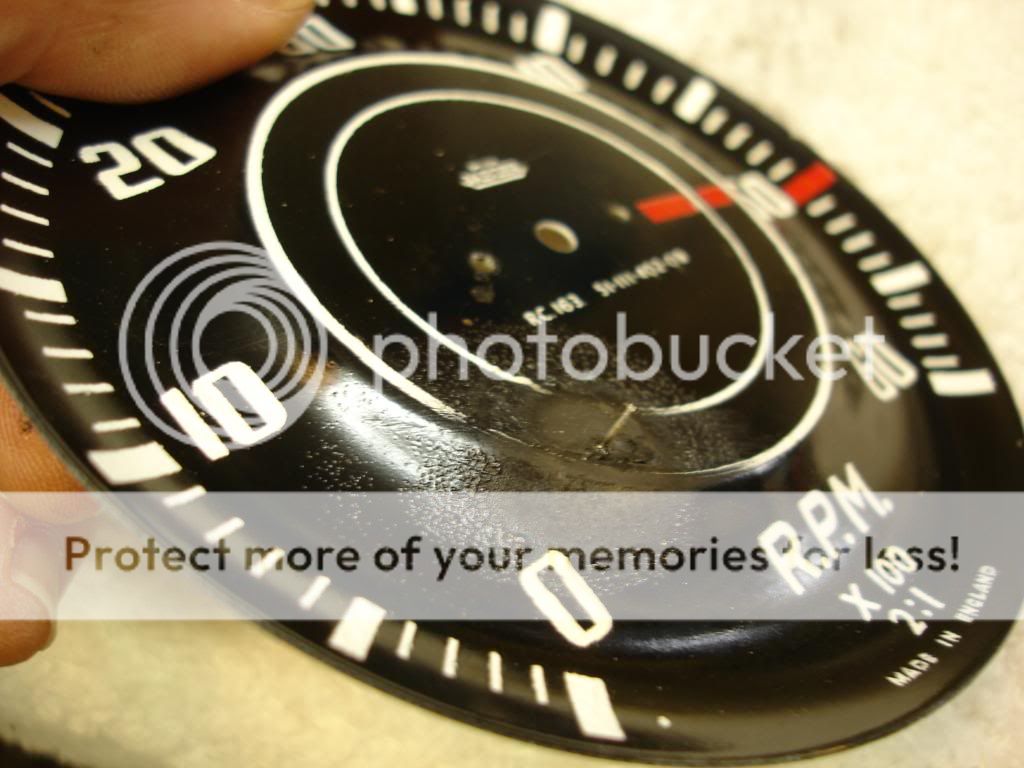
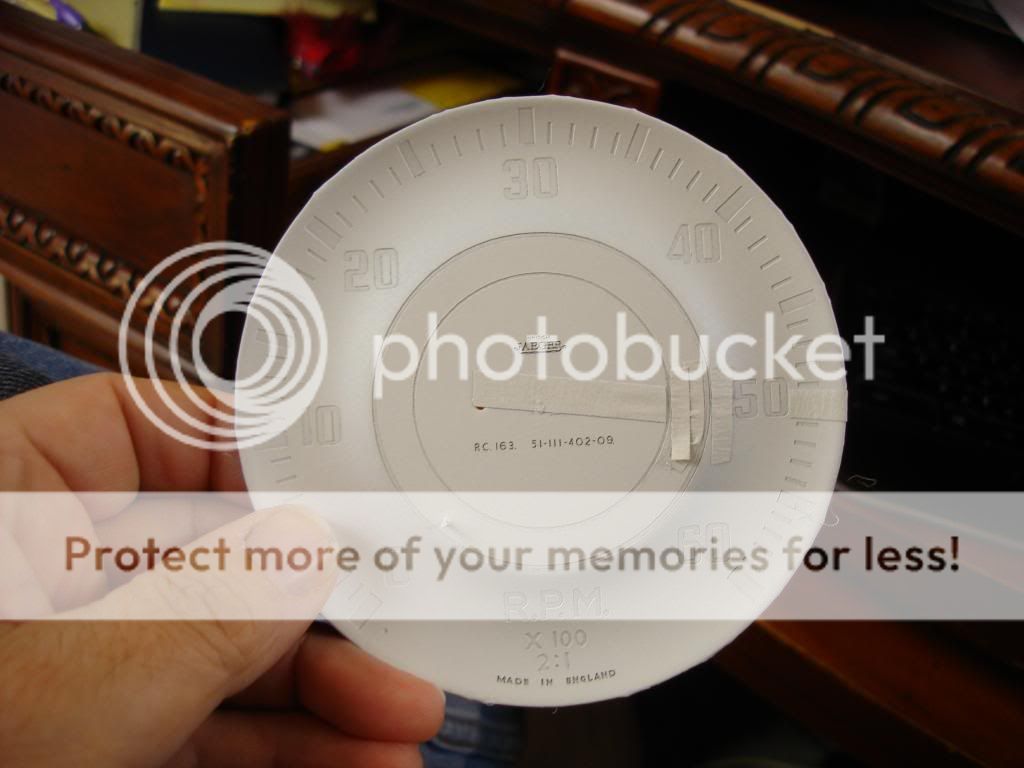
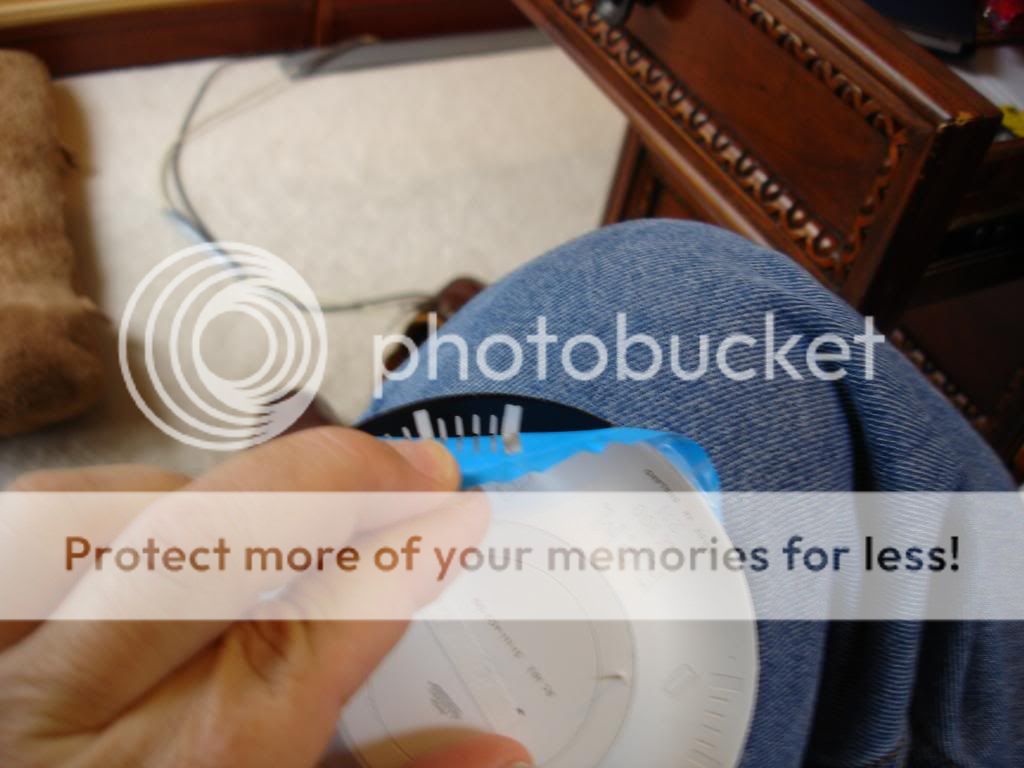
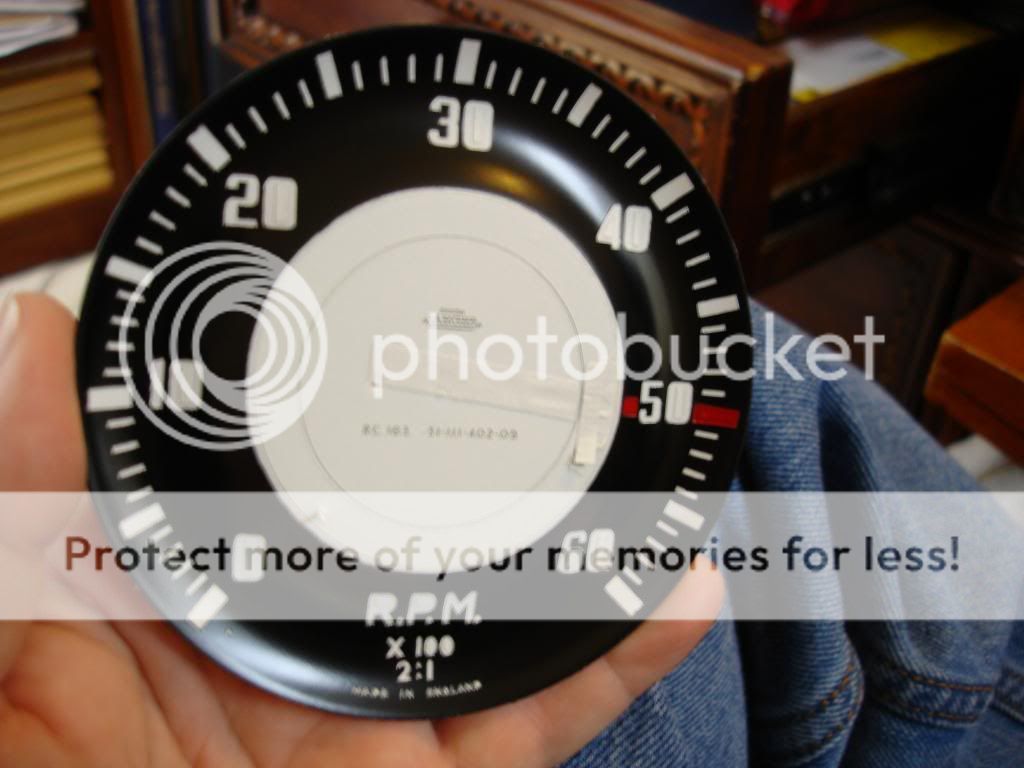
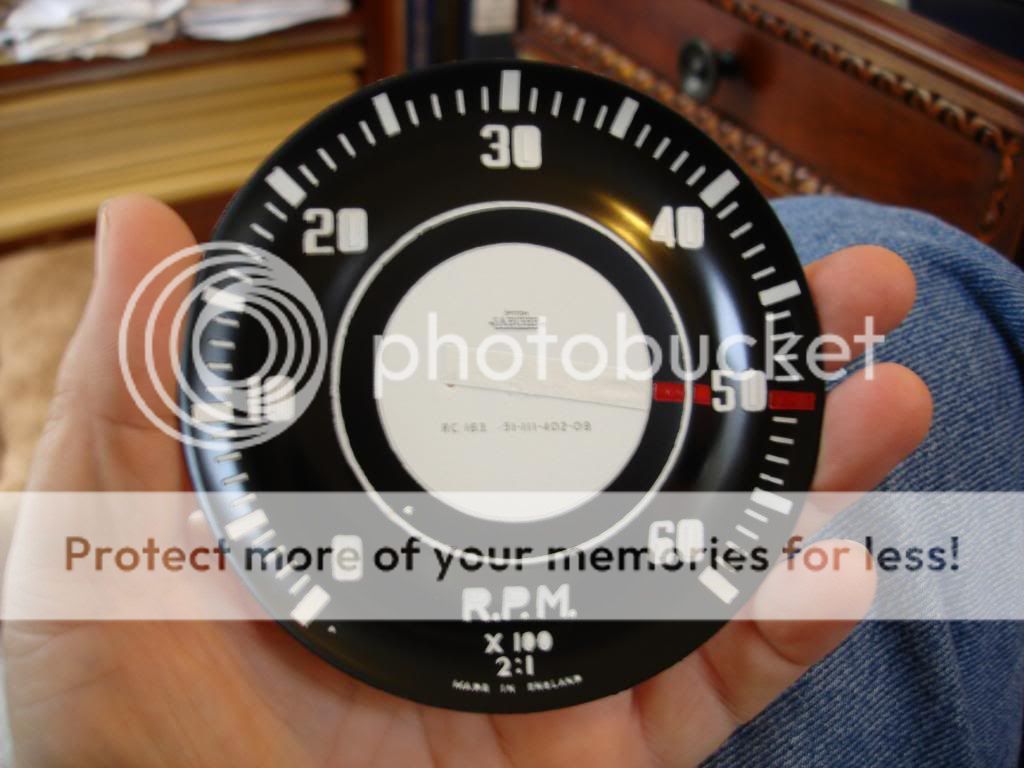
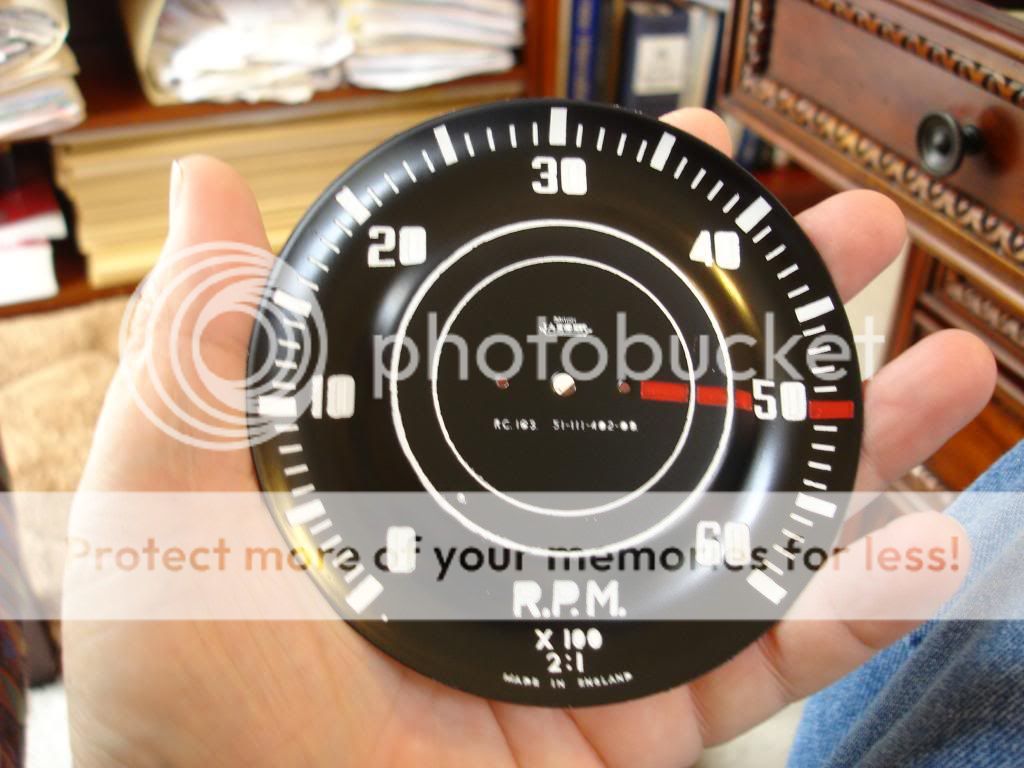
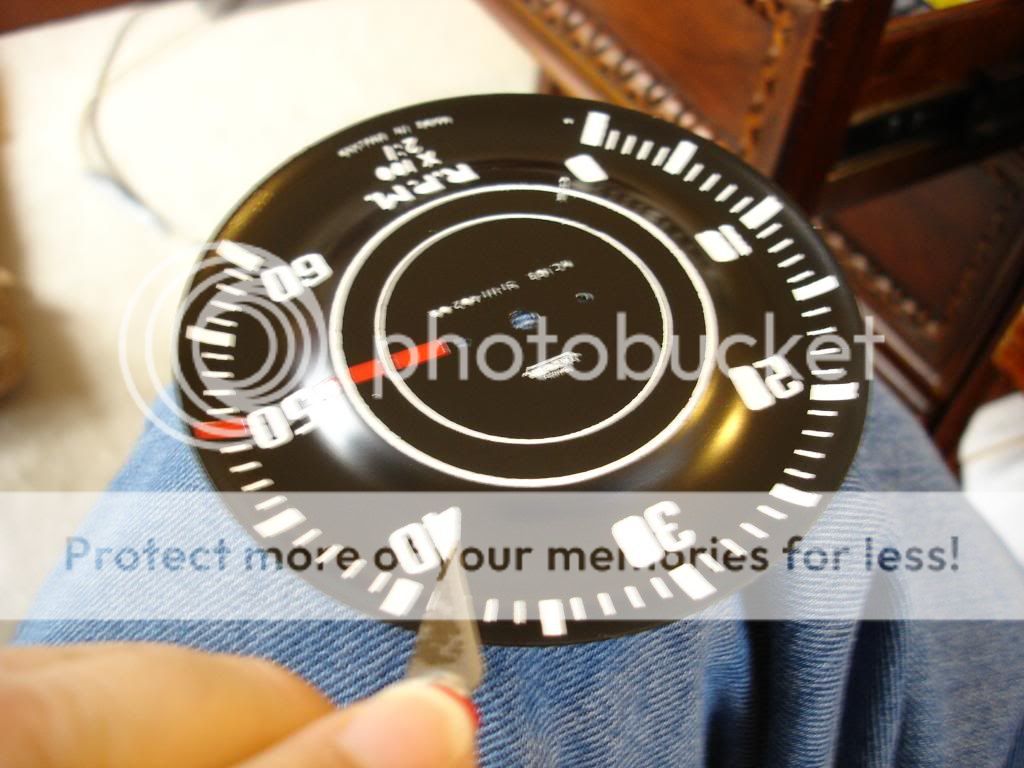
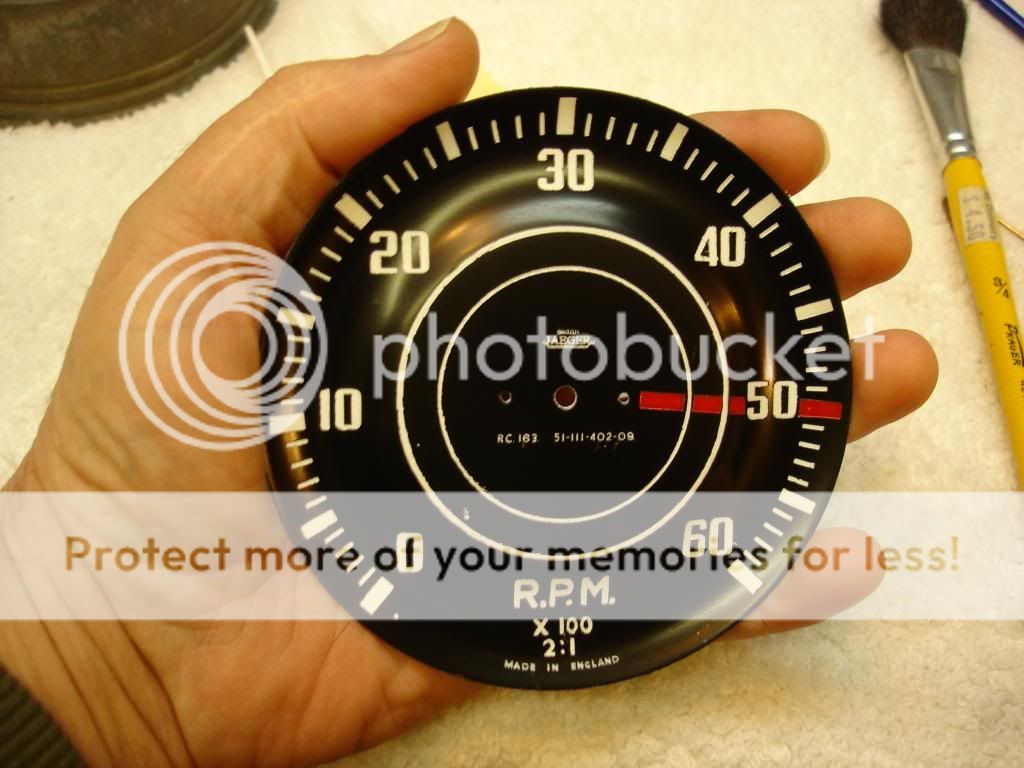
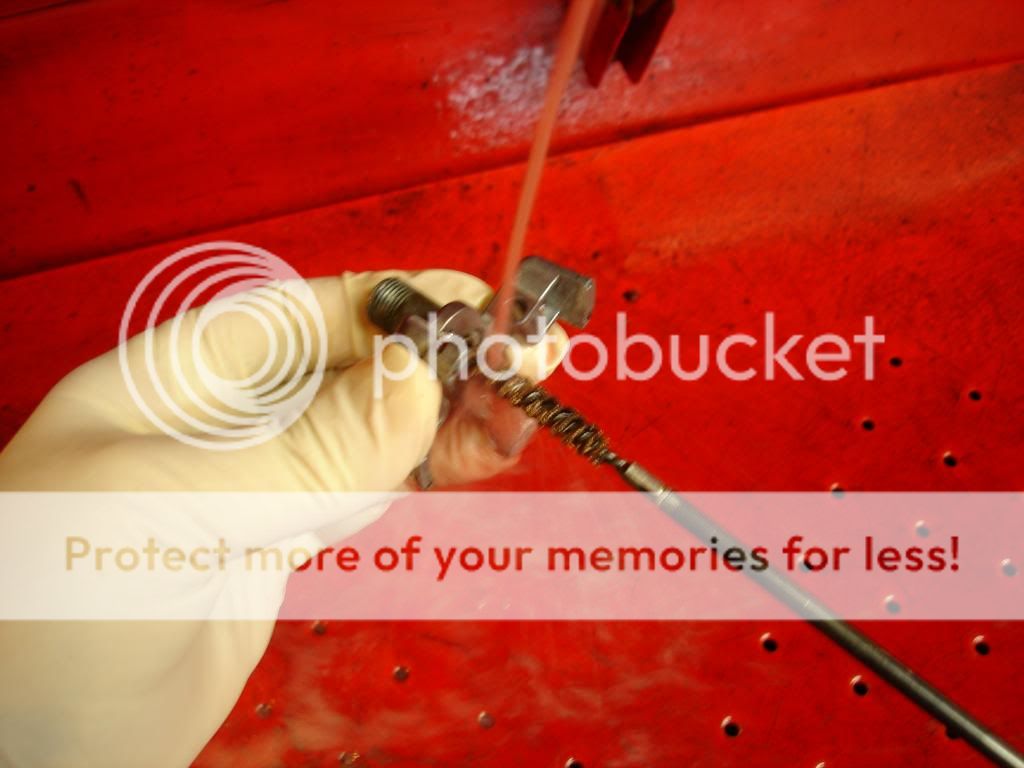
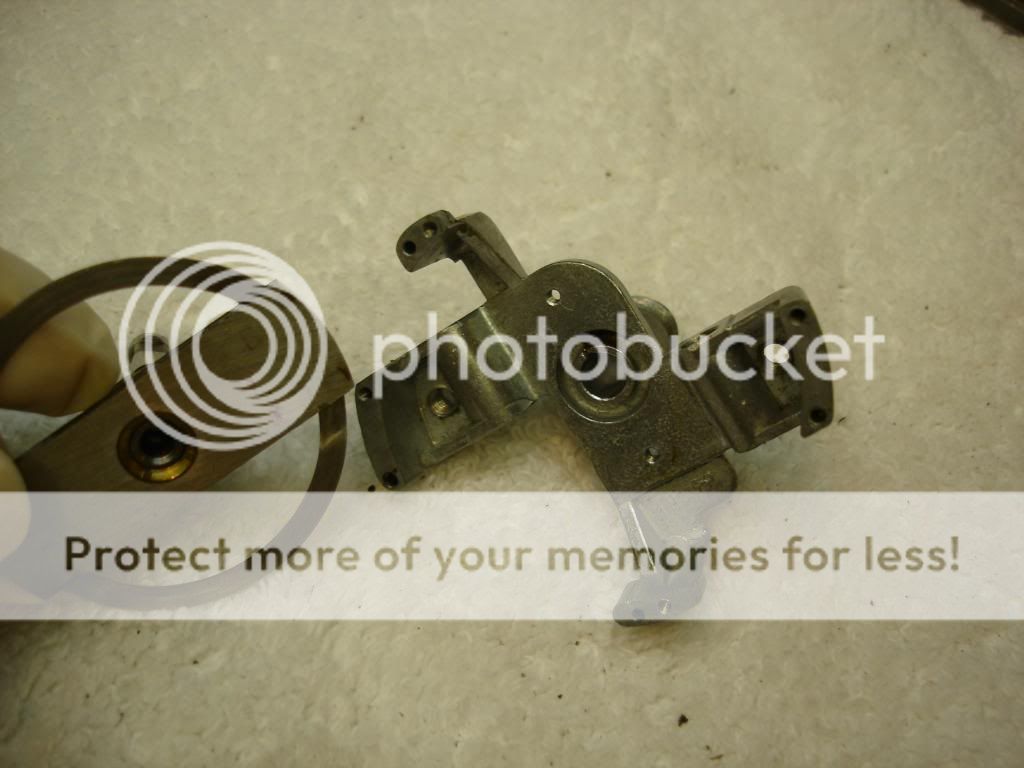

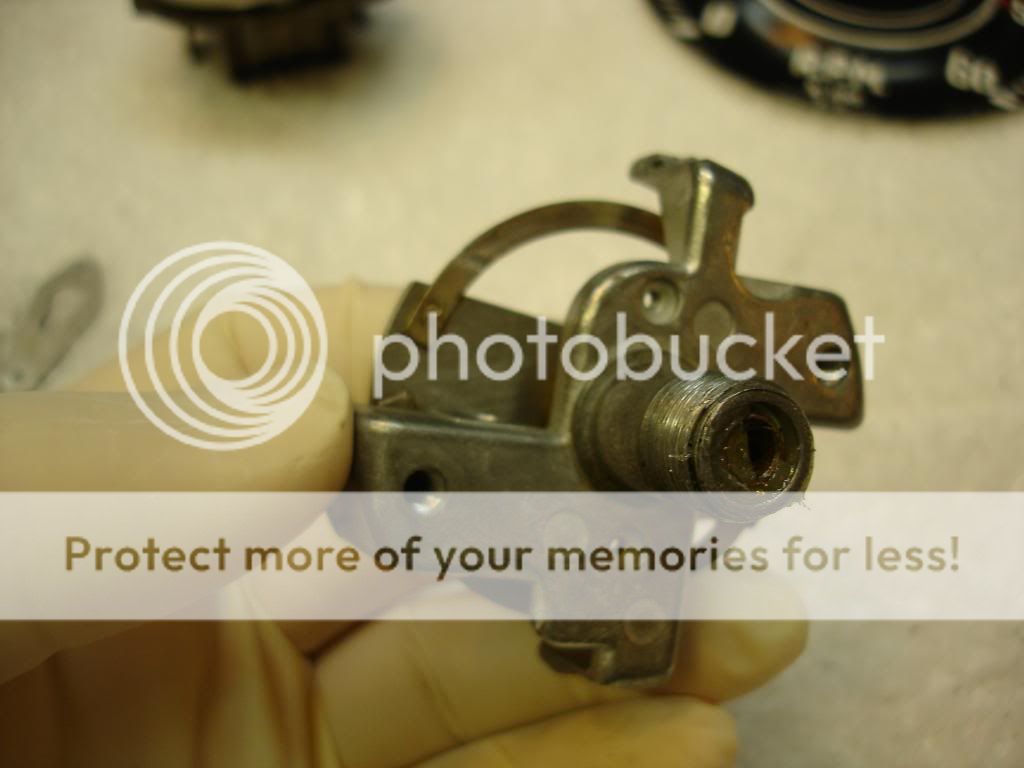
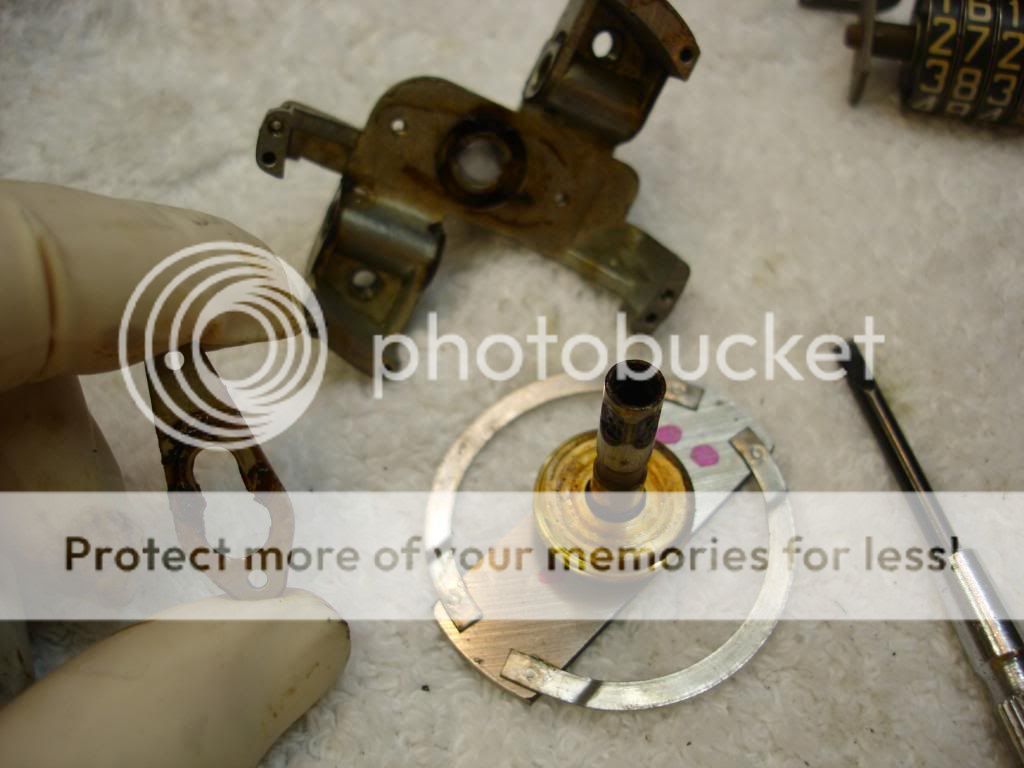
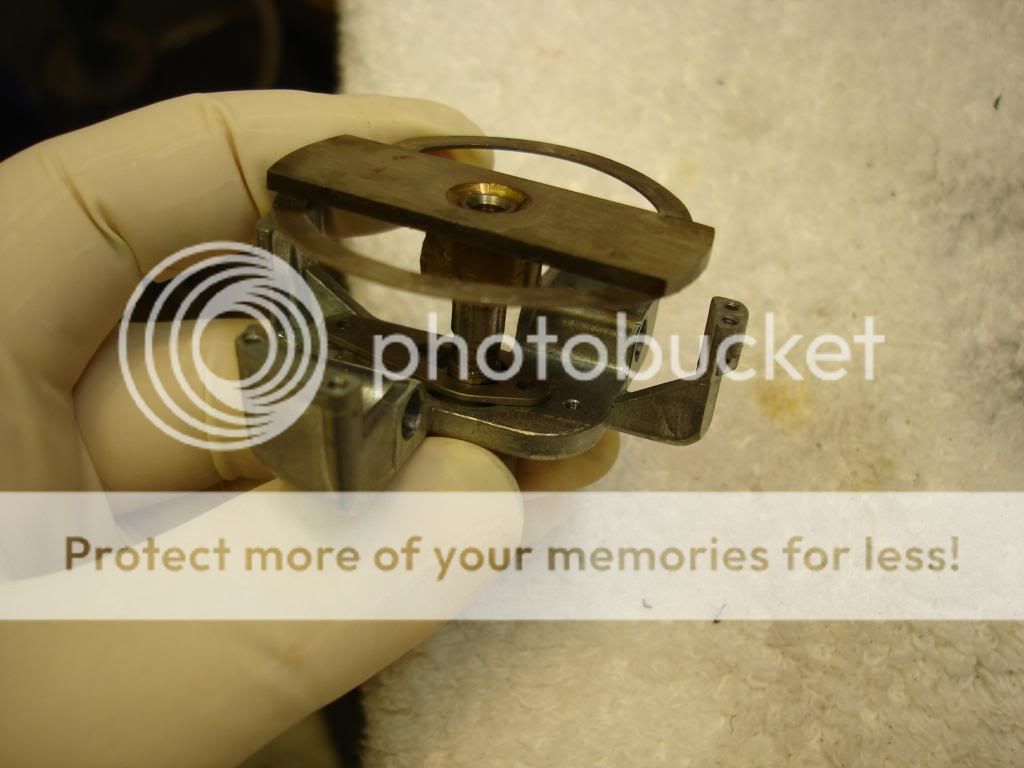

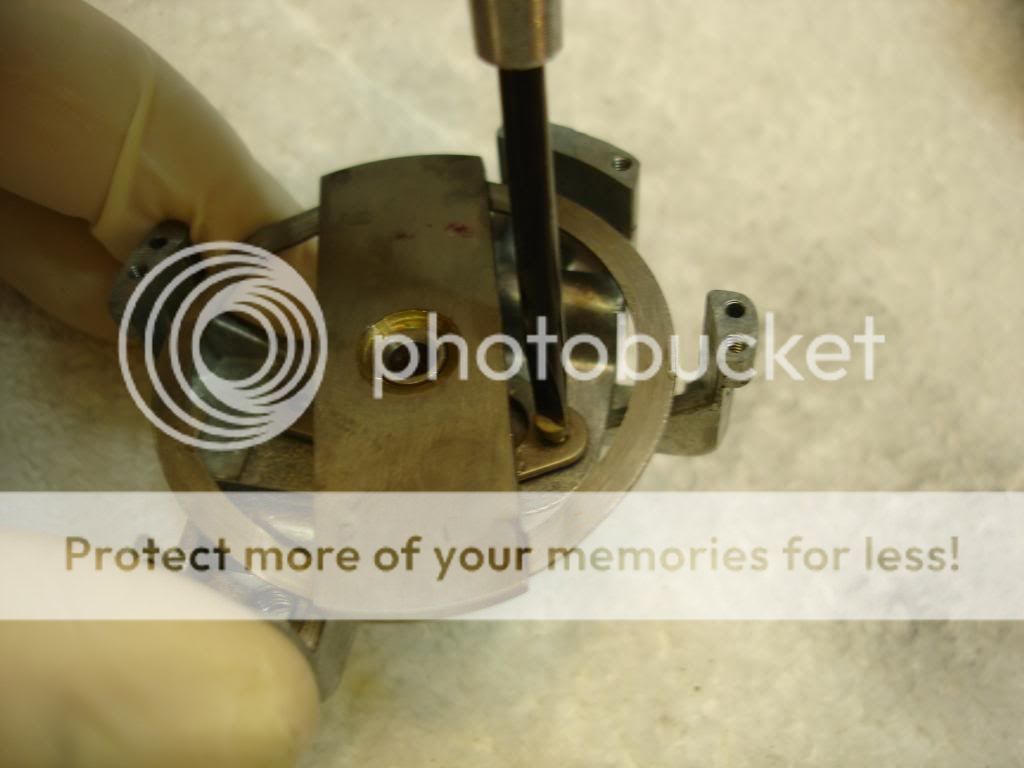
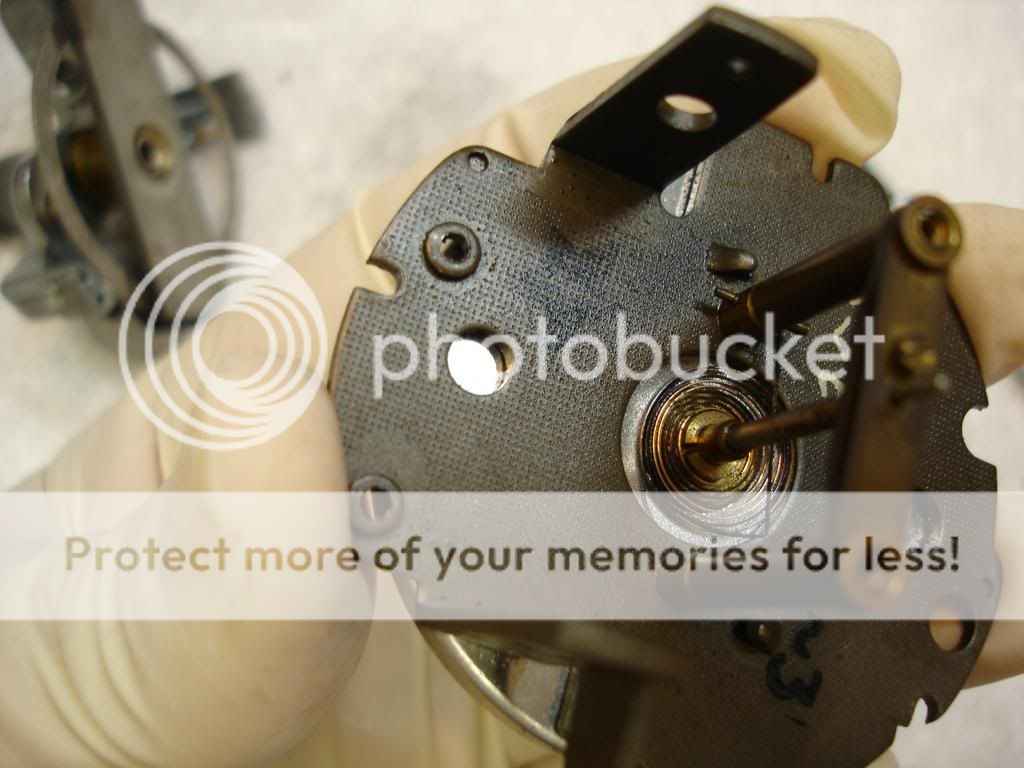
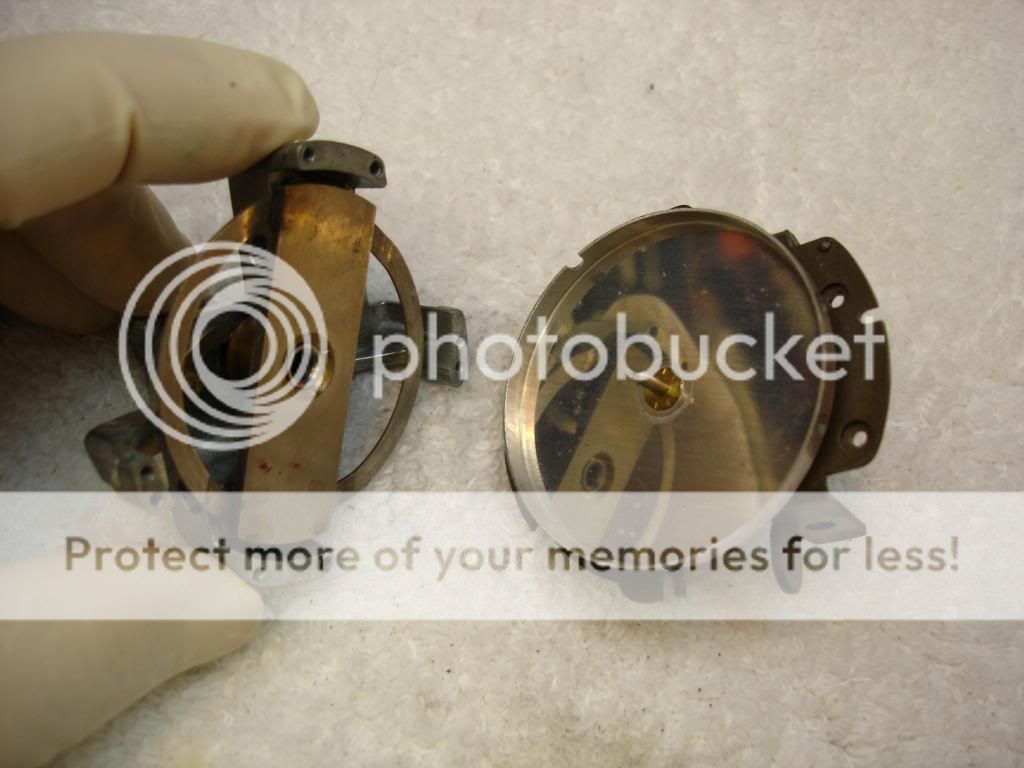

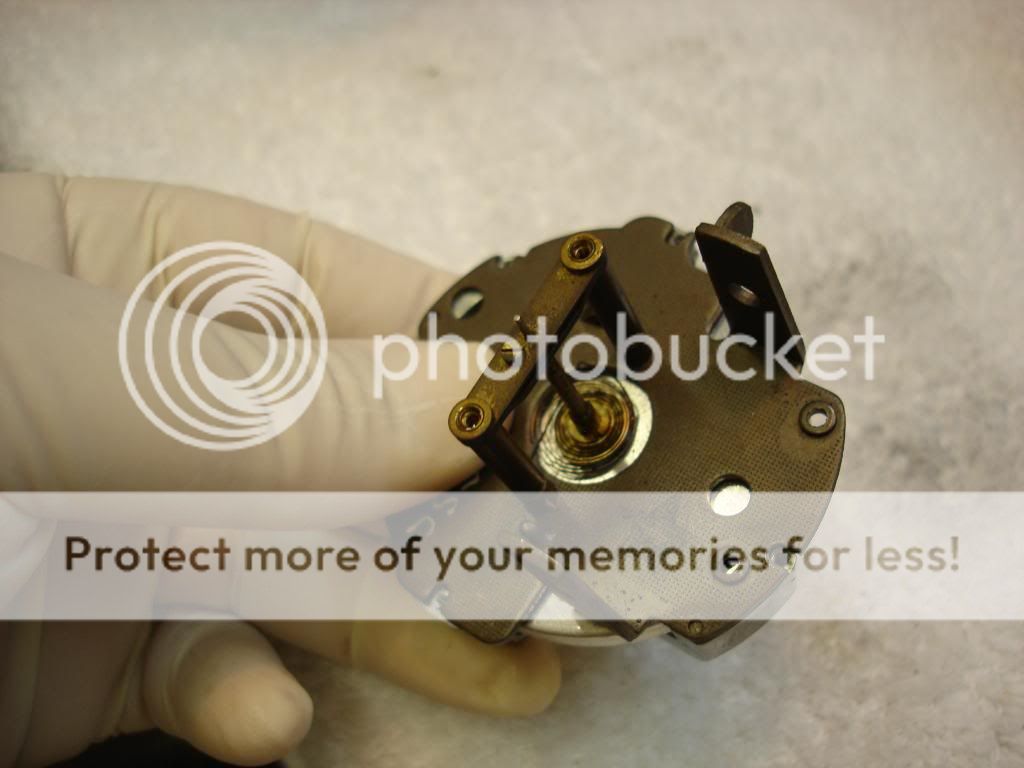
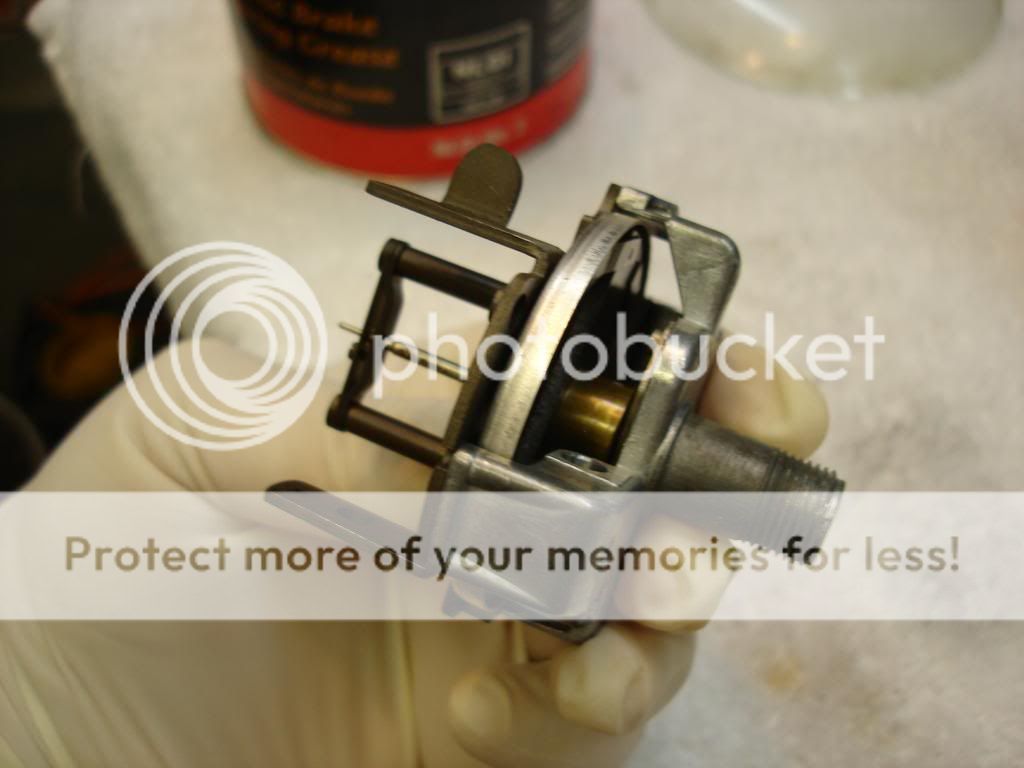
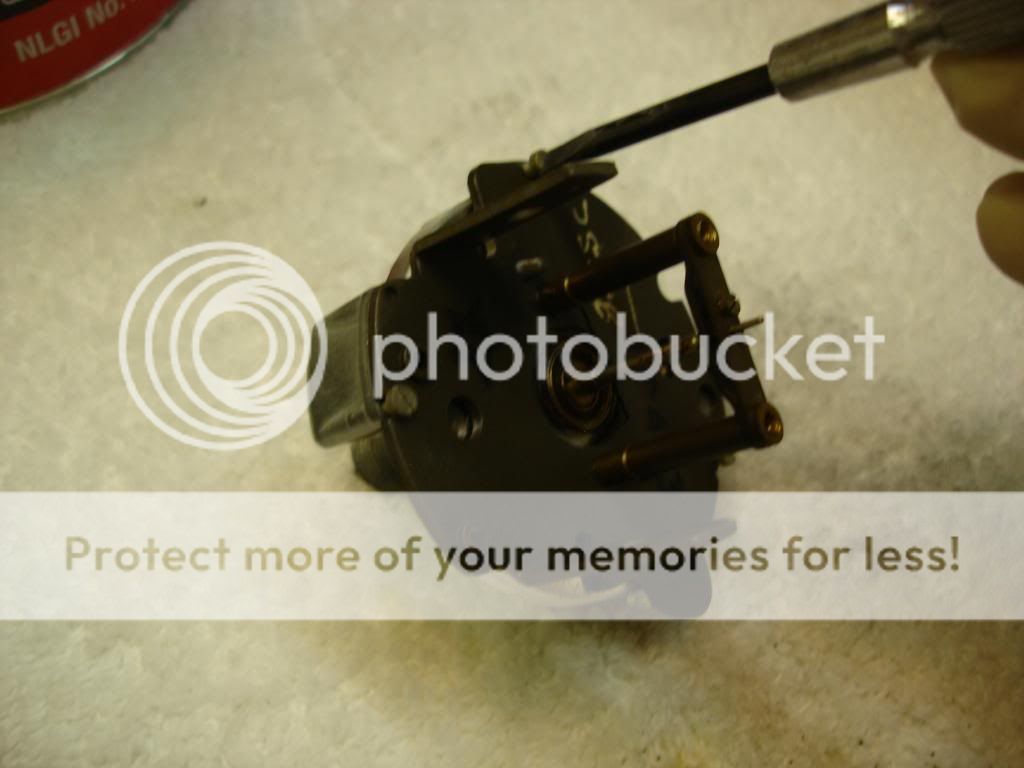
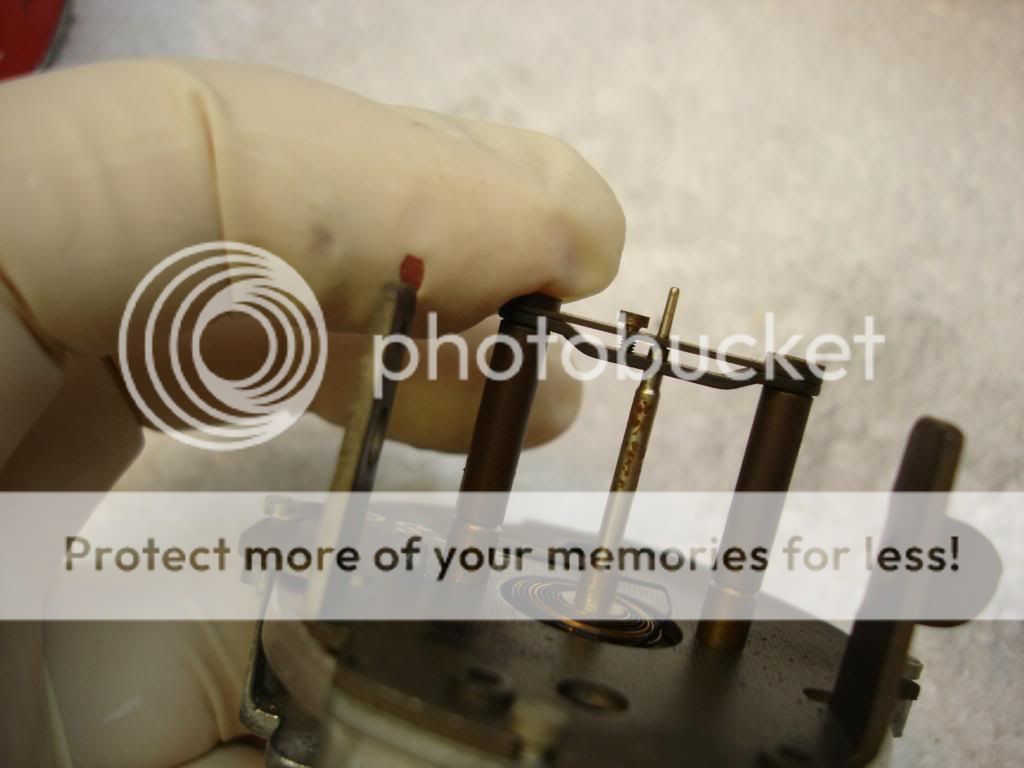
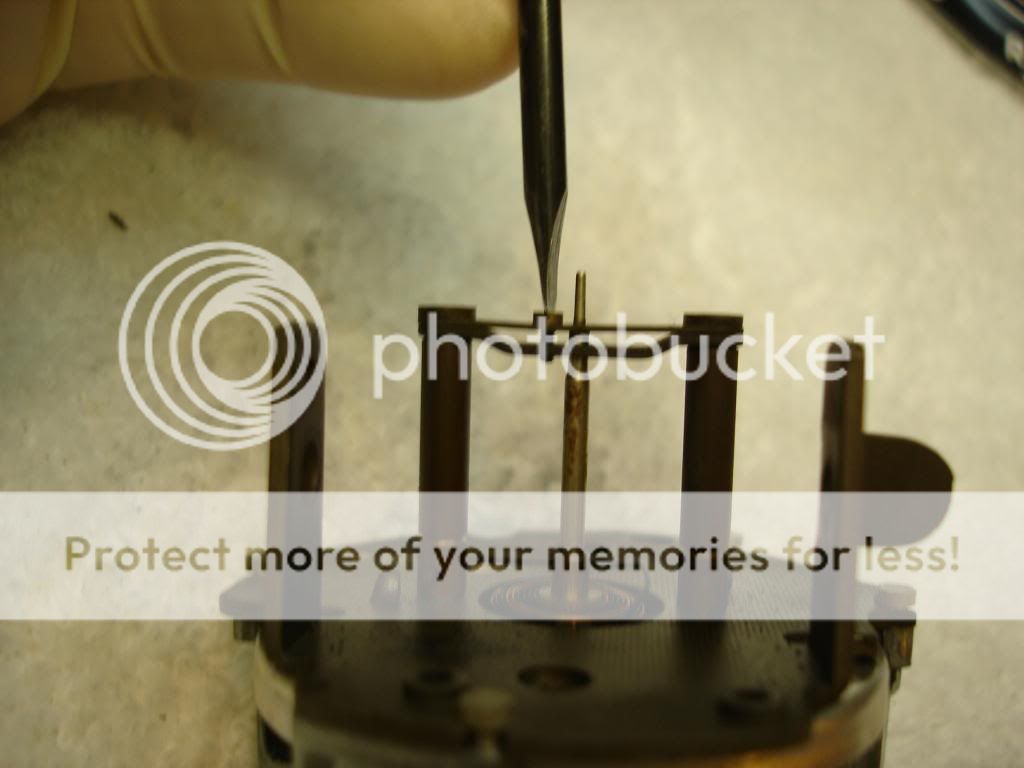
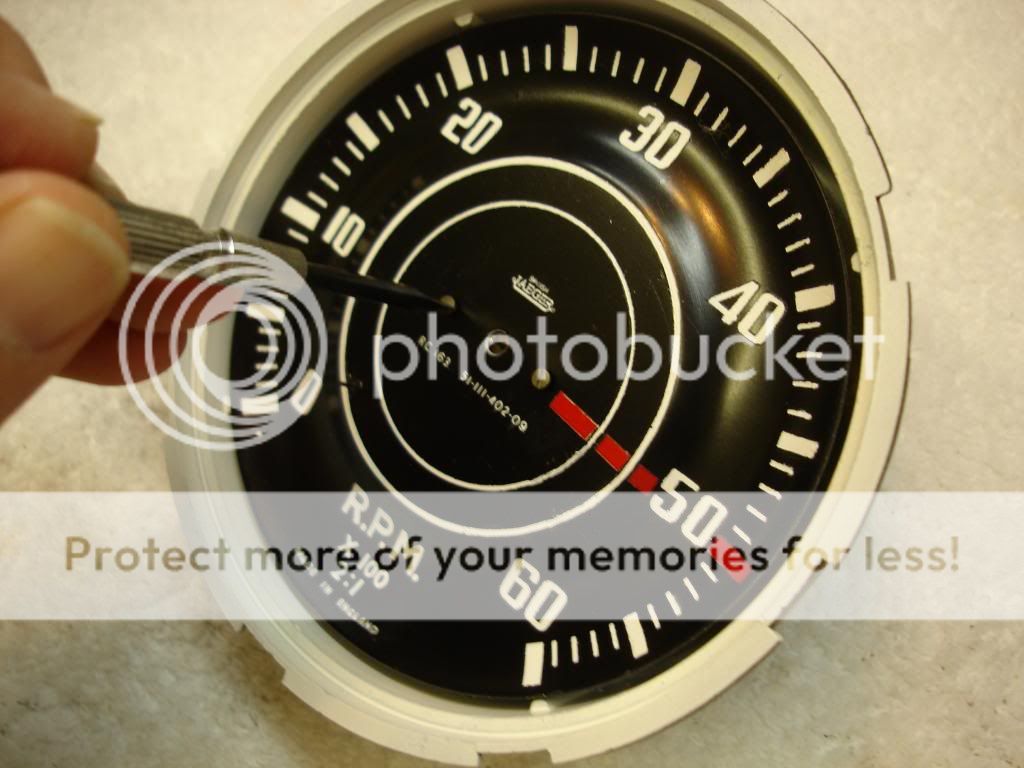
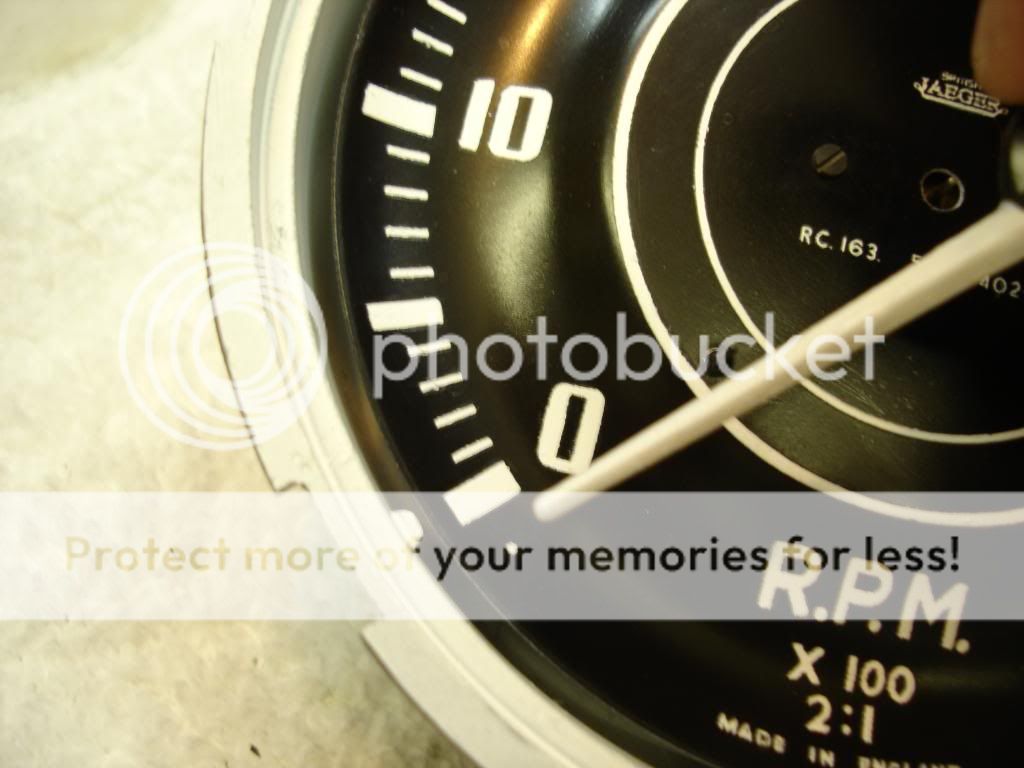
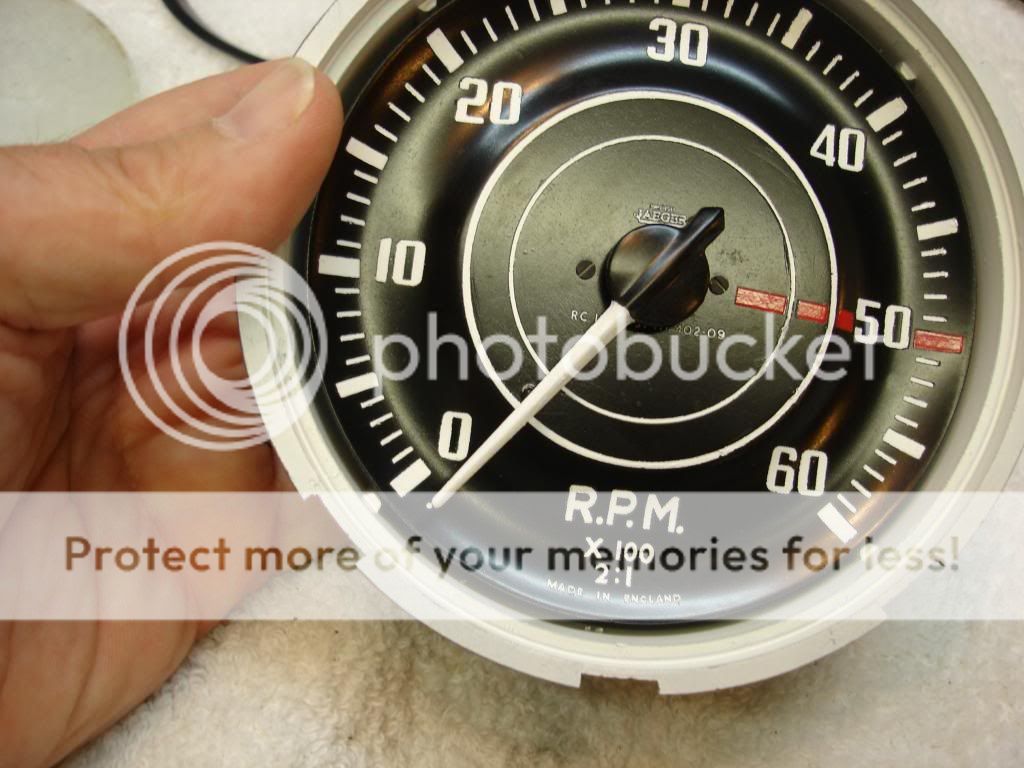

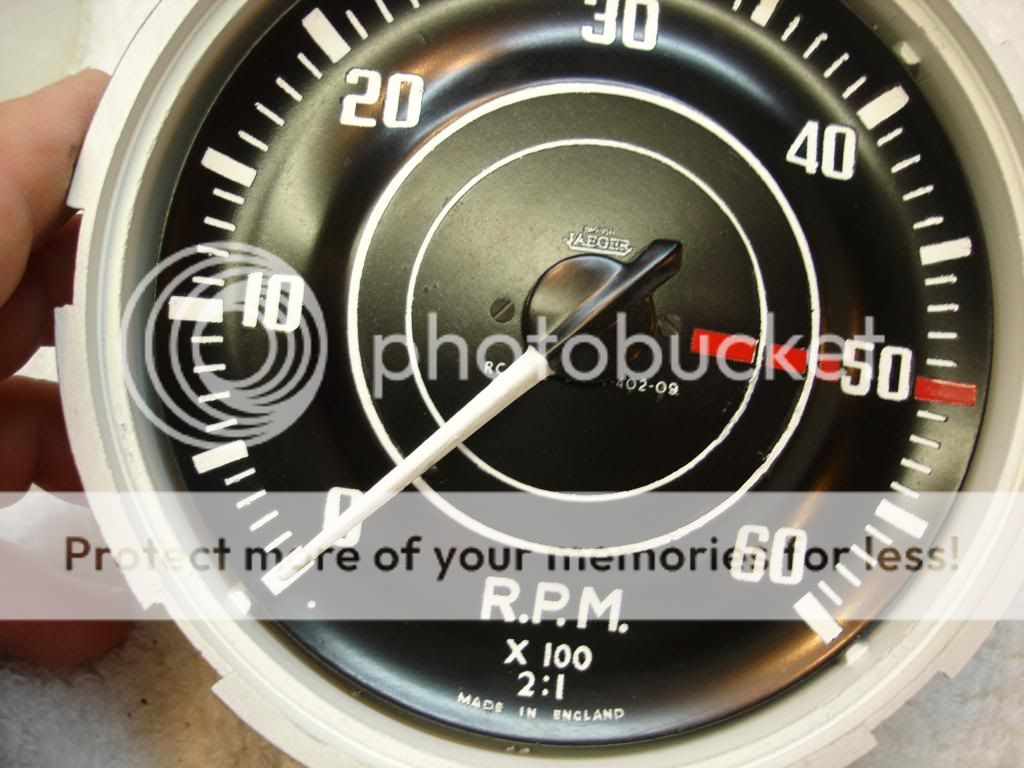
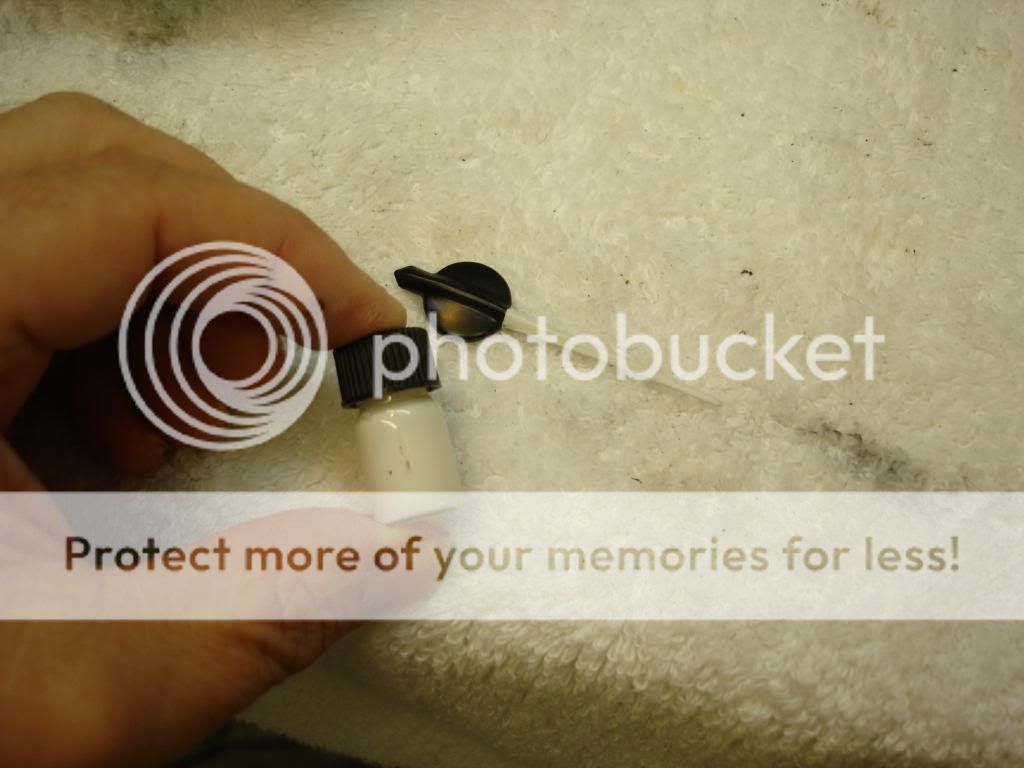




 A friendly reminder - be careful what links you click on here. If a link is posted by someone you don't know, or the URL looks fishy, DON'T CLICK. Spammers sometimes post links that lead to sites that can infect your computer, so be mindful what you click.
A friendly reminder - be careful what links you click on here. If a link is posted by someone you don't know, or the URL looks fishy, DON'T CLICK. Spammers sometimes post links that lead to sites that can infect your computer, so be mindful what you click.